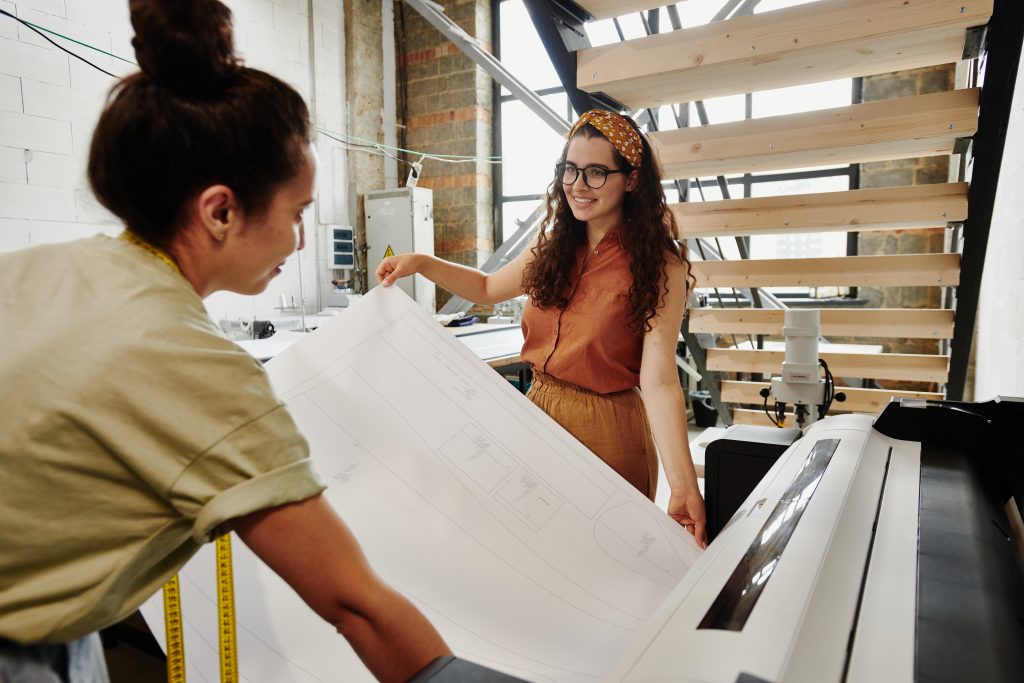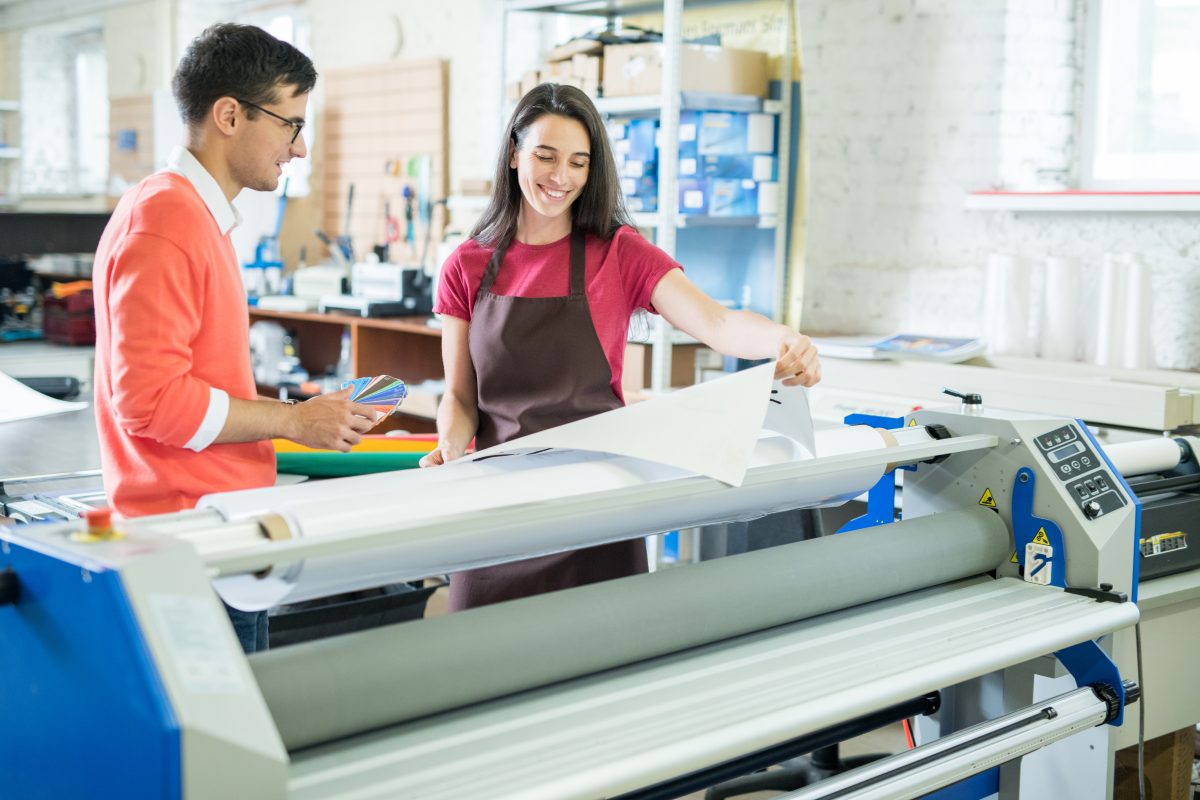Are you tired of spending hours designing large format prints only to have them turn out blurry or pixelated? Do you want to create eye-catching prints that make a lasting impression? Well, you’re in luck because I have four tips that will help you design effective large format prints.
Designing for large format prints can be a daunting task, but with the right techniques, you can create stunning visuals that grab attention. Whether you’re creating banners, posters, or billboards, these tips will ensure that your prints are clear, crisp, and visually appealing.
So, if you’re ready to take your large format printing to the next level, keep reading to discover four essential tips that will help you design prints that are both impactful and effective.
Tip 1: Familiarize Yourself With Different File Formats
When designing large format prints, it is crucial to be familiar with different file formats to ensure the best results. Here are some commonly used file formats for large format printing:
1. PDF (Portable Document Format): PDF files are widely accepted for large format printing because they preserve the image quality and formatting across different platforms. They are ideal for files with transparency or complex graphics.
2. TIFF (Tagged Image File Format): TIFF files are known for their high resolution and lossless compression. They are suitable for large format prints that require excellent image quality and detail.
3. EPS (Encapsulated PostScript): EPS files are primarily used for vector graphics and illustrations. They are easily scalable and maintain their quality regardless of size.
4. JPEG (Joint Photographic Experts Group): JPEG files are commonly used for web and digital purposes but may not be suitable for large format printing. They compress images and can result in loss of quality and detail.
5. AI (Adobe Illustrator): AI files are created using Adobe Illustrator and are mainly used for vector graphics. They are highly scalable and maintain image quality even at larger sizes.
Understanding the different file formats is essential for large format printing to ensure that the design is accurately translated onto the printed material. When preparing files for printing, it is important to use high-resolution images or capture images in RAW format to obtain the best print quality. High-resolution images are packed with more detail, resulting in sharper and crisper prints. RAW format images also retain more data, allowing for better adjustments in post-processing.
Tip 2: Pay Attention To Quality Of Your Image
When designing large format prints, one of the most critical elements to consider is the quality of the image. The image quality directly affects the final output and the overall impact of your design. If the image is low-resolution or poor in quality, it can result in a blurry and pixelated print that fails to convey your message effectively.
The impact of image resolution on the output resolution is crucial to understand. The resolution refers to the number of pixels in an image, and it determines the level of detail and crispness in the print. As the viewing distance increases, the perceived sharpness of the image decreases. This means that an image with a low resolution might look fine on a computer screen but becomes noticeably degraded when blown up for large format prints.
Various factors should be considered when determining the output resolution. These include the intended viewing distance, the size of the print, and the type of material used. As a rule of thumb, the larger the print and the closer the intended viewing distance, the higher the required resolution.
To ensure high-quality prints, it is vital to use high-resolution images from the start. If necessary, capture images in RAW format to retain the most data for post-processing adjustments. Additionally, scaling images properly in software like Adobe Photoshop can help maintain image quality and minimize any potential loss of detail.
Tip 3: Consider Your Fonts Appropriately
When designing large format prints, choosing the right fonts is crucial for creating an effective and visually appealing design. Fonts not only convey style but also play a significant role in readability, especially when viewed from a distance. Here are some tips for selecting fonts that work well in large format prints.
1. Style and Readability: Fonts should be chosen based on both their style and readability. Consider the overall theme and tone of your design and select fonts that align with it. However, make sure the fonts are easy to read, even from a distance. Sans serif fonts, such as Arial or Helvetica, are often a good choice for large format prints because their wide spacing between letters enhances legibility.
2. Assess Readability from a Distance: When selecting fonts, it’s important to imagine how they will appear from a distance. Consider the intended viewing distance and ensure that the text is easily readable at that distance. Test it by printing a small sample and viewing it from different angles and distances to determine legibility.
3. Seek Feedback: Don’t rely solely on your own judgment. Show your design to others and gather feedback on the font choices. Others may spot readability issues or suggest alternative fonts that better suit the intended message and design.
Tip 4: Utilize Professional Software Programs
When it comes to designing effective large format prints, it’s crucial to utilize professional design software programs such as Adobe Illustrator, InDesign, or CorelDRAW. These programs offer a wide range of advanced tools and features that can greatly enhance the quality and impact of your designs.
One of the major benefits of using professional software programs is their seamless integration of vector and raster imagery. Vector images are ideal for large format prints because they can be scaled up without losing image quality. They are made up of mathematical equations, allowing for smooth lines and sharp edges. In contrast, raster images, such as photographs, are composed of tiny pixels and can lose quality when enlarged. Professional design software allows you to easily incorporate both types of images into your designs, ensuring optimal visual impact.
Additionally, professional software programs provide proper set up for print. They allow you to define the file size, color mode, and resolution, ensuring that your design meets the requirements for large format printing. They also provide options for file formats that are optimized for large prints, reducing the risk of loss of quality during the printing process.

Conclusion
In conclusion, accuracy is of utmost importance in large format graphic design to ensure that all elements are properly aligned and visually appealing. Reliable alignment tools are crucial in achieving this accuracy. While Smart Guides may seem convenient, they can sometimes lead to misalignments due to their automatic snapping feature. It is recommended to use alternative alignment methods, such as gridlines or rulers, to manually align elements and avoid any potential misalignments.
Maintaining accuracy in large format design is essential to avoid costly mistakes during the printing process. Misalignments can result in wasted materials, additional printing costs, and overall dissatisfaction with the final product. By utilizing proper alignment tools and taking the time to ensure accuracy, you can greatly minimize the risk of errors and achieve high-quality large format prints that meet your desired standards.
In summary, accuracy and attention to detail are key when designing for large format prints. Take advantage of professional design software, utilize reliable alignment tools, and double-check your designs to avoid any misalignments. By following these tips, you can create visually impressive and impactful large format prints that effectively convey your message.
